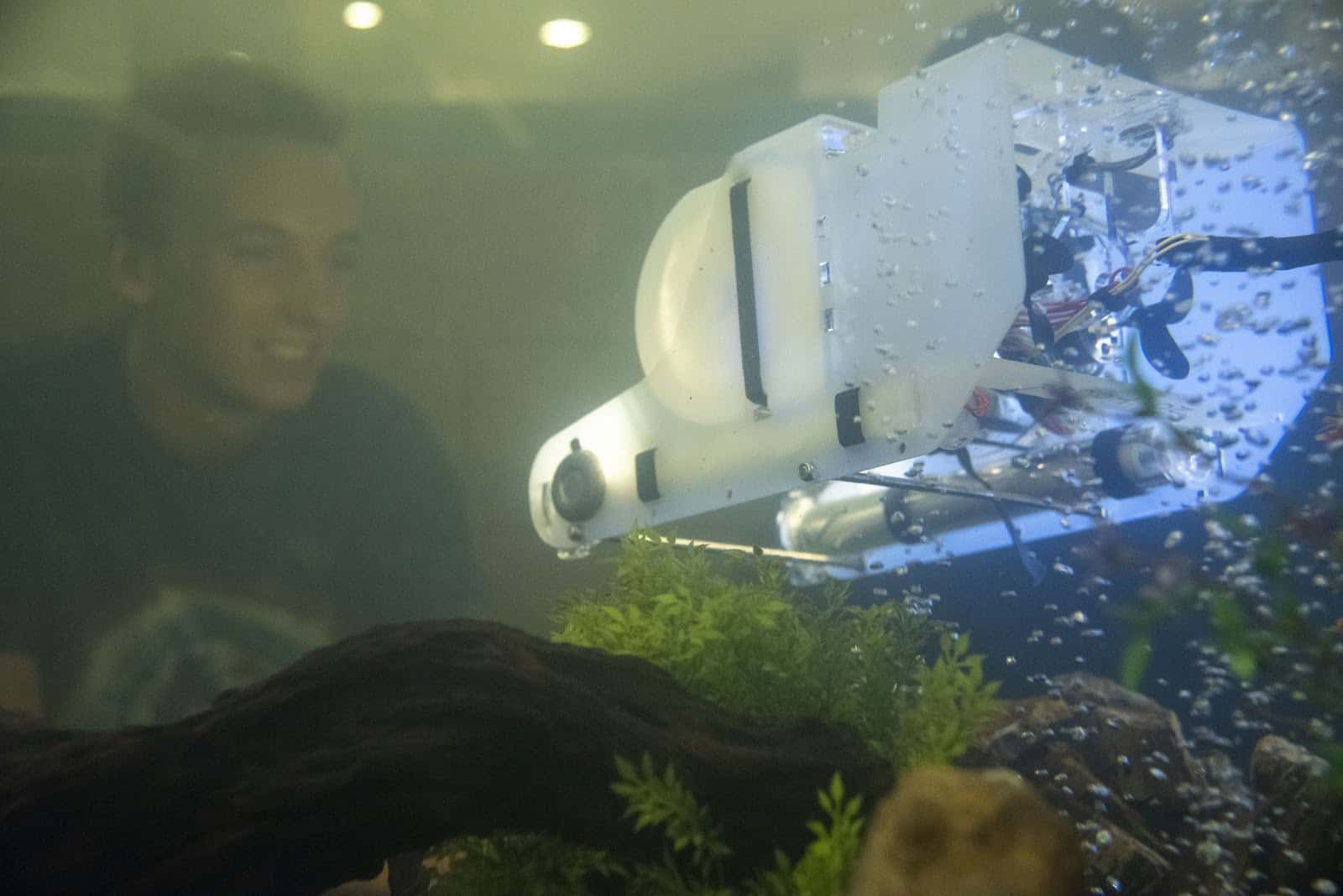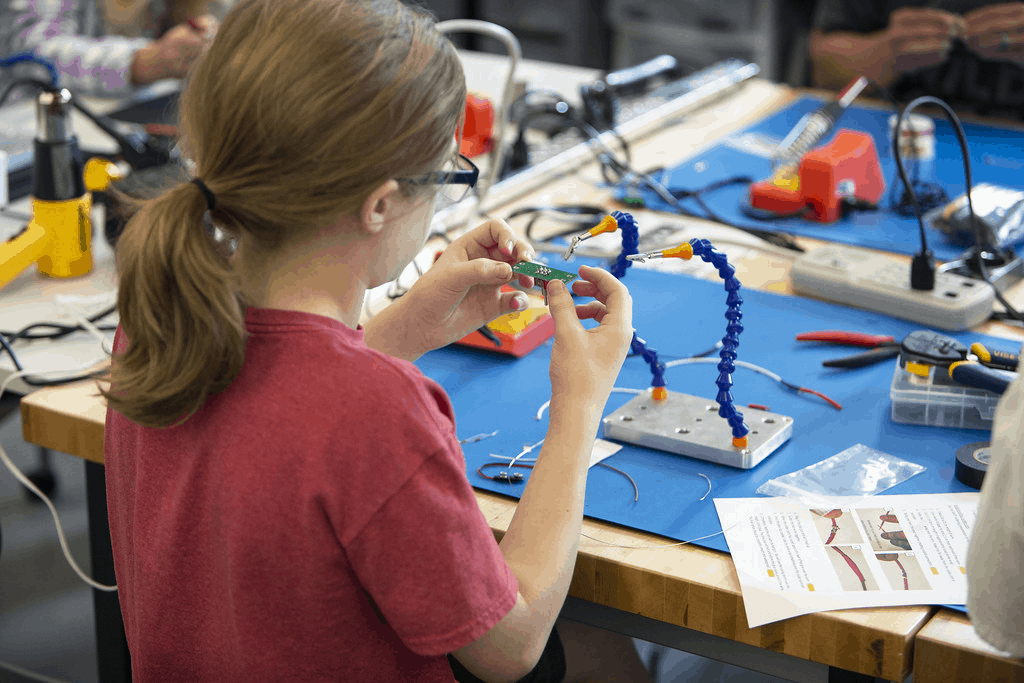Build Support, Innovate, Repeat: Agile Public Education in Colorado

With thoughtful sustained leadership, big school districts can earn community trust, establish and maintain rigorous academic standards, and become agile—even innovative. That’s the lesson from schools in Longmont, Colo., north of Denver.
St. Vrain Valley Schools (@SVVSD) serves the city of Longmont and a dozen smaller communities in four counties stretching from the Continental Divide to the Plains and covering 411 square miles.
Serving 33,000 students in 60 schools, the district is growing by several hundred students each year and is likely to double in size over the next few decades as people continue to move to this area of robust growth, technology, and other incredible opportunities (with equally spectacular views).
When Don Haddad joined St. Vrain 19 years ago as a high school principal, the district was experiencing significant struggles. They lacked community trust, had a $14 million budget shortfall, and had never passed a local mill levy.
When he became superintendent 12 years ago, Dr. Haddad (@SVVSDsupt) began developing a team and building community support to work collaboratively developing a comprehensive mission and vision designed to provide a strong competitive advantage for every student.
In addition to a can-do attitude, the leadership team urged a shift in the focus from asking “What could our community do for us?” to “What could we do for our community?”
The new team began laying the groundwork for a strong foundation of rigorous academics and a plethora of incredible co-curricular programs in the areas of performing arts, visual arts, and much more. “We push academic excellence with an aligned system and a strong tech infrastructure,” said Haddad. “A strong foundation of academics serve as a platform for robust innovation.”
How Business Partners Support Innovation

St. Vrain Valley Schools is a ‘full-choice’ district with more than 90 business partners that support real-world learning in career pathways including STEM, biotech, aerospace, energy, medical and biosciences, visual and performing arts, leadership, and P-TEACH—a program promoting pathways to a teaching career. College credit partnerships offer a year or more of college credit in each pathway.
In 2016, the district opened Colorado’s first Pathways to Technology Early College High School (P-TECH) program. The P-TECH model enables students to earn an associate’s degree alongside their high school diploma at no cost to the student. Students also earn valuable experience working with mentors from industry partners while enrolled in the program and are first in line for jobs upon graduation.
At Skyline High School’s P-TECH program, students gain a powerful work experience at IBM while working toward an Associate of Applied Science in Computer Information Systems at Front Range Community College.
At Frederick High School’s P-TECH, students benefit from partnerships with Tolmar, Agilent Technologies, and Avexis while working toward an associate’s degree focusing on biochemistry from Aims Community College. An upcoming third P-TECH at Silver Creek High will focus on cybersecurity.
More than 700 St. Vrain learners participate on 155 robotics teams with the support of mentors from local businesses.
Haddad recognized that St. Vrain is a big business for northern Colorado. As it is approaching 6,000 employees and serving numerous industry and community partners, St. Vrain also employs about 140 students as technicians and designers in part-time jobs and work study programs.
St. Vrain also recently moved its Innovation Center to a new 50,000-square-foot state-of-the-art facility. The Innovation Center is a next-generation career center offering advanced opportunities in technology and entrepreneurship (see feature).
This year, the district is also launching its new Mobile Innovation Lab initiative and will expand opportunities in academics and technology throughout Colorado and beyond. Funded entirely through corporate partners including IBM, UC Health, Stapp Toyota, Crestone Peak Resources, and United Power, the lab will highlight transformative learning experiences and pilot new curriculum and advanced technologies.
Using Grants, Local Levies, and Bonds to Fund Innovation

In 2010, St. Vrain won a federal innovation grant for $3.6 million and raised more than $700,000 in local matching funds.
In 2012, St. Vrain won a $16.7 million Race to the Top grant which laid the groundwork for P-TECH and the Innovation Center.
Touring the Innovation Center, Hilary Sontag, Director of Competitive Grants & Strategic Partnerships (@SontagHilary) points to evidence of support from the Rose Community Foundation, Daniels Fund, and the Morgridge Family Foundation.
The district has passed two local mill levies, which are currently worth approximately $56 million annually (and growing) to support, among other things, enriched teacher development and 1:1 technology access for secondary students—the latter of which has been recognized with top awards by the International Society for Technology in Education (ISTE) and the Consortium for School Networking (COSN). The community also passed a facilities bond initiative in 2008 for $189 million and one in 2016 for $260.3 million.
“Building on top of a strong academic foundation has enabled disciplined, robust innovation,” explained Haddad. “It has expanded districtwide access to new programs and complex design thinking experiences.”
Cultivating Leadership is Key to Stability
Stable and effective leadership is key to St. Vrain’s success at improving on traditional measures and developing innovative new programs.
One way that St. Vrain builds community support and develops leadership capacity is Leadership St. Vrain, a nine-month program that allows community volunteers to dive into school district operations, share their perspectives, and become more active participants. Many School Board members emerge from this program, yielding cohesive mission-focused governance.
The local chambers of commerce recognized St. Vrain as the Business of the Year, Large Business of the Year, and Most Innovative Business of the Year. The Longmont Economic Development Council recognized the district for serving as a top economic catalyst, preparing graduates to join society with a competitive advantage.
Launched last year, Community Strong is a community engagement campaign that supports partnerships between the district and the wider community. Interested partners create a profile highlighting their potential for presentations, tours, or internships and the platform matches them with schools.
Advocating for Public Education
“We are taking public education by #StVrainStorm!” is a theme that is supported by the district’s leadership, teachers, staff, students, and community that has served to inspire the St. Vrain community around the many successes of its students and schools.
St. Vrain also sponsors an initiative to build support for public education in Colorado called Our Schools Our Community, led by Kerri McDermid, Chief Communications and Global Impact Officer (@mcdermid), and Brandon Shaffer, Executive Director of Legal and Governmental Affairs (@BShafferCO). Stories are shared on Twitter at @COSchoolsProud and #COSchoolsProud.
“Remarkable things can happen in public education when transformative leadership (such as St. Vrain’s team) is in place for a number of years, and systems are built to sustain a strong, equitable foundation, as well as innovative practices,” said Deputy Superintendent Jackie Kapushion.
For more, see:
- Business Leadership for Education Scores Texas-Size Win For Kids
- Four Keys to Success at the Most Innovative Schools in the World
- 10 (Interpersonal) Traits of Innovative School Leaders
Stay in-the-know with innovations in learning by signing up for the weekly Smart Update.
This post was originally published on Forbes.




0 Comments
Leave a Comment
Your email address will not be published. All fields are required.